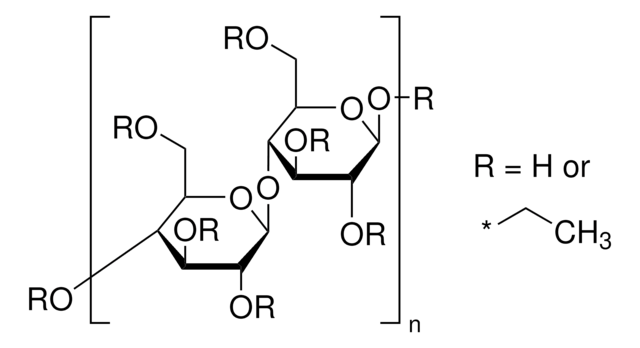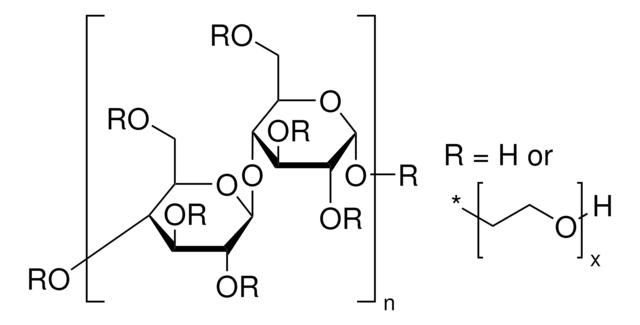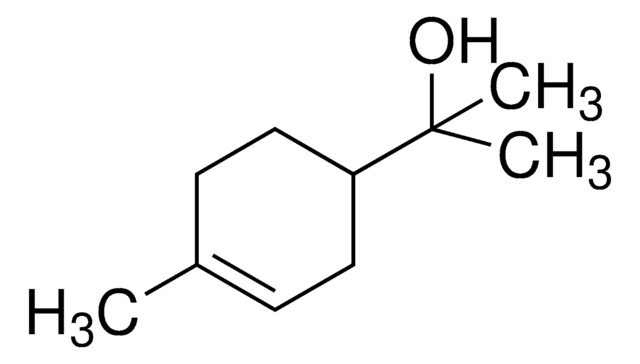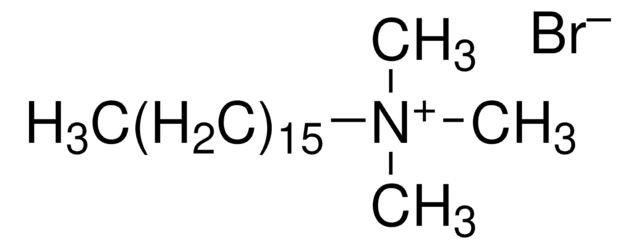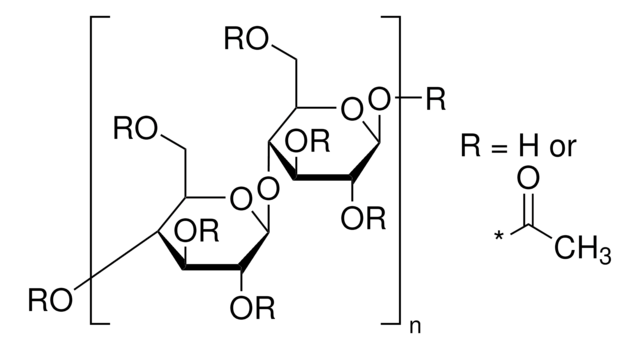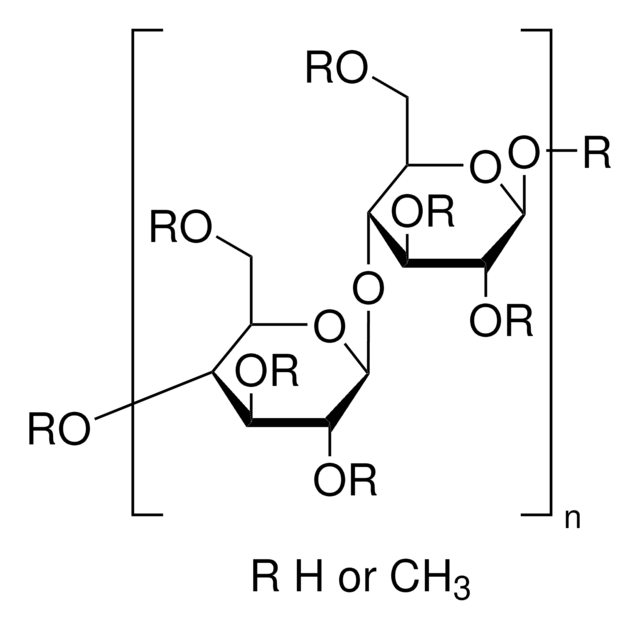Recommended Products
Quality Level
Assay
48.0-49.5% (w/w) (ethoxyl)
form
coarse powder
powder
autoignition temp.
698 °F
color
beige
refractive index
n20/D 1.47 (lit.)
viscosity
30-70 mPa.s, 5 % in toluene/ethanol 80:20(25 °C)
density
1.14 g/mL at 25 °C (lit.)
Looking for similar products? Visit Product Comparison Guide
Application
Ethyl cellulose is generated by converting a variable number of hydroxyl groups on the repeating glucose units to ethyl ether groups. Ethylcellulose is used in the preparation of biostructures such as matrices, microspheres, microparticles, pellets and tablets for use in drug delivery.
Preparation Note
Ethyl Cellulose is soluble in a wide range of solvents such as aliphatic alcohols, chlorinated solvents, and natural oils. It is insoluble in water, glycerin, and prolylene glycol.
Other Notes
To gain a comprehensive understanding of our extensive range of Polysaccharides for your research, we encourage you to visit our Carbohydrates Category page.
Storage Class Code
11 - Combustible Solids
WGK
WGK 1
Flash Point(F)
Not applicable
Flash Point(C)
Not applicable
Personal Protective Equipment
dust mask type N95 (US), Eyeshields, Gloves
Choose from one of the most recent versions:
Already Own This Product?
Find documentation for the products that you have recently purchased in the Document Library.
Customers Also Viewed
Avi Schneider et al.
Proceedings of the National Academy of Sciences of the United States of America, 117(49), 31010-31017 (2020-11-25)
Perovskite solar cells have developed into a promising branch of renewable energy. A combination of feasible manufacturing and renewable modules can offer an attractive advancement to this field. Herein, a screen-printed three-layered all-nanoparticle network was developed as a rigid framework
N Suwannateep et al.
European journal of pharmaceutics and biopharmaceutics : official journal of Arbeitsgemeinschaft fur Pharmazeutische Verfahrenstechnik e.V, 82(3), 485-490 (2012-09-08)
The phytochemical curcumin possesses antioxidant activity; however, it becomes unstable after being exposed to light or heat or loses activity during storage. This is especially important when curcumin is applied to the skin within a cosmetic or pharmaceutical formulation, since
Syed Umer Jan et al.
Pakistan journal of pharmaceutical sciences, 25(4), 751-756 (2012-09-27)
The aim and objective of the present study was to formulate and evaluate controlled release polymeric tablets of ibuprofen with determinations of formulation factors using various grades and types of polymer ethocel i.e. ethocel standard 10P; 10FP, 100P and100FP for
Anurag Verma et al.
Acta pharmaceutica (Zagreb, Croatia), 62(2), 237-250 (2012-07-04)
Chitosan has become a focus of major interest in recent years due to its excellent biocompatibility, biodegradability and non-toxicity. Although this material has already been extensively investigated in the design of different types of drug delivery systems, it is still
Daniela Traini et al.
International journal of pharmaceutics, 438(1-2), 150-159 (2012-09-12)
The potential of excipient coating to enhance aerosol performance of micronized drugs in carrier excipient-drug blends, used in dry powder inhalers, was investigated. Both EC (ethyl cellulose) and PVP (polyvinylpyrrolidone) were used as coating agents. Carriers were prepared via sieve
Our team of scientists has experience in all areas of research including Life Science, Material Science, Chemical Synthesis, Chromatography, Analytical and many others.
Contact Technical Service